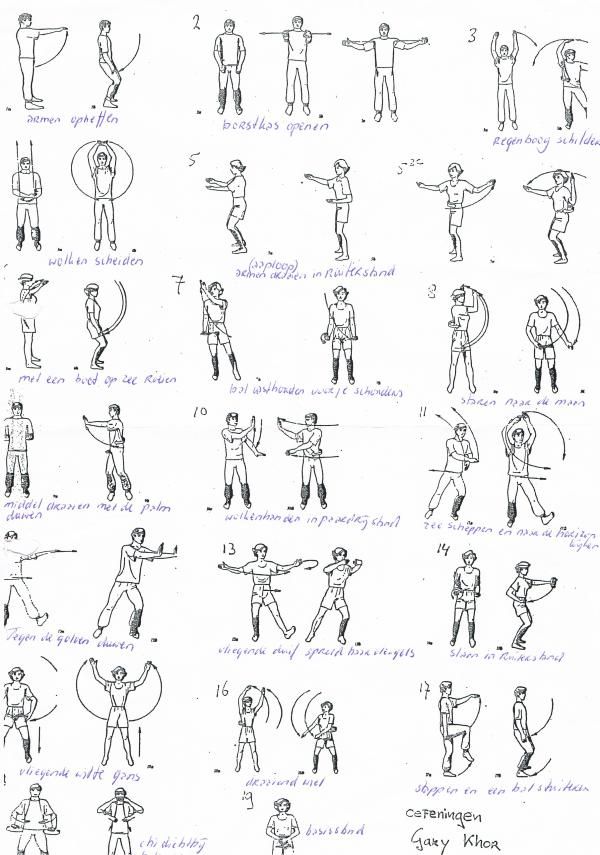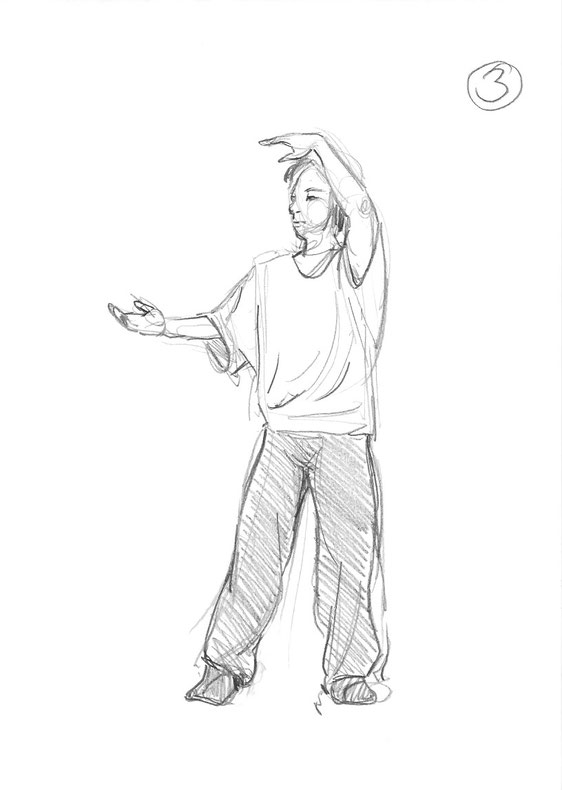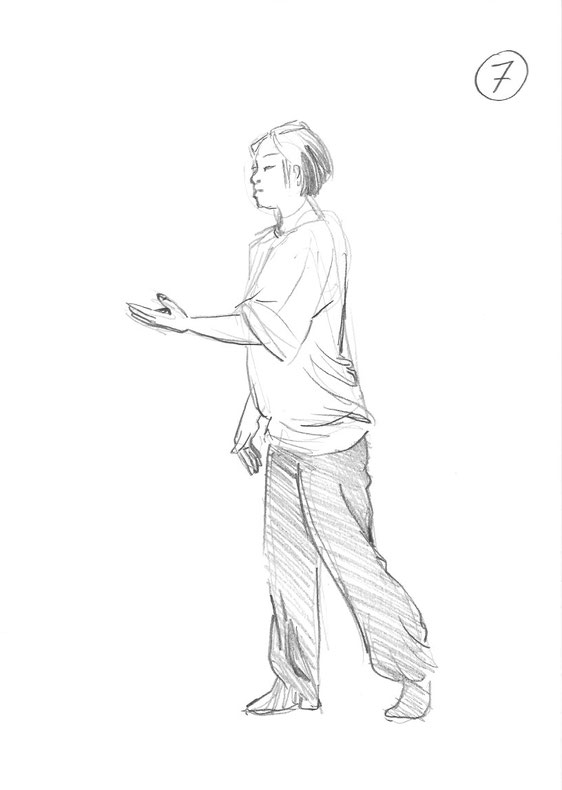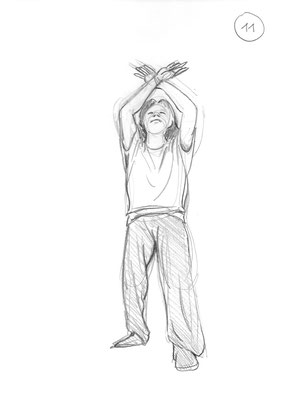Tai Chi Qigong Shibashi (十八式) Set 1 - FAQ with Master Wing Cheung
I would like to address some frequently asked questions and common mistakes made by students when they practice the shibashi qigong.

Q. What is the ideal speed of doing this qigong?
A. The ideal speed for each person is different. The speed should depend on your own breathing since each movement is coordinated with breathing. If your breath is shallow, you may tend to perform the whole set faster than if your breath is deep.
Beginners who have no previous training in breathing usually perform the whole set in about 10 minutes. That is about 12 breathes per minute. In my videos, I performed the set in this pace since I assumed most viewers were beginners. After you remember all the movements and their sequence by heart, you should do it at your own pace, no need follow the pace of the video anymore.
When I practice this qigong on my own, I usually spend about 20 minutes to perform a set. That is about 6 breathes per minute or 0.1 Hz (cycle per second). Coincidentally, it makes scientific sense to perform the Shibashi at this pace.
Our body has many different rhythms. The most obvious is our heart. Its beat to beat changes produce its own rhythm. Our brainwave has its own rhythm. Our blood pressure oscillation produces its own rhythm and the pace at which we breathe produces our respiratory rhythm… etc. When all our bodily rhythms are in sync with each other, our bodies will produce a powerful resonant frequency. Studies have found that there are many positive effects both physically and emotionally when our bodies vibrate at this resonant frequency.
For human beings, the resonant frequency of our system is approximately 0.1 Hz. Studies also find that our systems naturally oscillate at its resonant frequency when we are actively feeling a sustained positive emotion such as appreciation, compassion, or love.
Most people should be able to perform the Shibashi at a pace of 6 breaths per minute (0.1Hz), after practicing daily for a couple of months. Again, doing the exercise at a comfortable pace is more important than trying to achieve 6 breaths per minute. Over breathing may result if are not ready and force yourself to breathe deeply to achieve this pace. Over breathing may leave you feeling light headed.

Q. What is the benefits of each movement?
A. My initial response to this question is not to relate specific benefits to individual movements. Students obtain optimal benefits when they focus on practicing Shibashi as a whole as opposed to thinking about each movement individually.
However, since there has been so much interest in the health benefits of each movement, I will provide such information below. The information is based on the translation of Professor Lin’s book Tai Chi Qigong Shibashi. While Shibashi does bring with it numerous health benefits, it is not a replacement for any of the treatments prescribed by your medical doctor.

Benefits of Each Movement:
- 1. Improves conditions related to the heart and liver and high blood pressure.
- 2. Improves conditions related to the heart, lungs and nervous system.
- 3. Relieves back pain and decreases the fat around waist.
- 4. Relieves shoulder pain and boosts stamina.
- 5. Relieves shoulder, elbow and wrist pain and improves conditions related to the lungs.
- 6. Helps the digestive system and increases mental clarity.
- 7. Improves conditions related to the kidney and increases spiritual energy.
- 8. Helps digestion, improves conditions related to the stomach and spleen and increases weight loss.
- 9. Helps digestion, improves conditions related to the stomach and spleen, strengthens waist and boosts stamina.
- 10. Helps digestion, improves conditions related to the nervous system and increases spiritual energy.
- 11. Improves conditions related to the kidney and stomach, increases weight loss and relieves waist and leg pain.
- 12. Improves conditions related to spleen, liver and lungs and decreases the instances and severity of insomnia.
- 13. Improves conditions related to the heart, liver, lungs and nervous system.
- 14. Increases lung capacity and improves conditions related to the lungs, nervous system and decreases the instances and severity of insomnia.
- 15. Relieves anxiety and headaches.
- 16. Promotes blood circulation, boosts stamina, increases weight loss and relieves waist and leg pain.
- 17. Improves body coordination, decreases the instances and severity of insomnia and fatigue.
- 18. Improves conditions related to the heart, stomach, high blood pressure and calms the mind.
The benefits of the 1st set Tai Chi Qigong Shibashi are much more than the above mentioned. Just remember, the whole is greater than the sum of its parts.



Q. Can I increase the number of repetitions for each movement?
A. It would be more beneficial to do the entire set twice instead of increasing the number of repetitions for each movement. However, if a particular movement makes you feel really good, you could repeat that movement a few more times.
Q. Can I step forward with my right foot for movements 11-13?
A. Yes, you may. One of the reasons why we only do it on one side for these 3 movement is it allows the flow of qi better. For beginners, if they shuffle their feet too often, the feeling of qi flow is not as smooth as remaining on one side. Here is my suggestion for those who really wish to do it on both sides:
a. If you have time to do the entire set twice, then do the first time with your left foot stepped forward and then the second time with your right foot stepped forward.
b. If you only have time to do the set once, then for movements 11-13, do them with your left foot stepped forward first and cut the repetitions in half. After that, repeat movements 11-13 with the right foot stepped forward. Again, cut the repetitions in half. By doing the form this way, you only need to shuffle your feet twice.
Q. How often should I practice this qigong?
A. You may do it as often as you like. However, I’d say do the entire set twice in the morning and twice in the evening is enough. If you have plenty of time, then spend more time on the Wuji stance (the opening posture) and the ‘stance of holding the qi ball’ (the ending posture). These stances are really good at accumulating qi. Sometimes I remain in these stances for over an hour. Those who have a busy schedule should do this qigong at least once a day.
Common Mistakes – Shoulders:
Most beginners tend to raise their shoulders when they raise their arms. The shoulders should be relaxed all the time because when they are relaxed, you can breathe deeper, thus allowing the whole body to be more relaxed. Also, the qi flow to the arms would be much better when the shoulders are relaxed. Sadly, many beginners are often so tense and stressed out that they forget how to relax their shoulders.
Here is a simple technique to relax the shoulders:
- a. Breathe in, raise the shoulders.
- b. Hold the breathe for 10 seconds, hold the shoulders in the raised position.
- c. Breathe out, let the shoulders sink down naturally.
Repeat steps a – c at least 9 times.
There is a free video clip on https://taichi18.com/online-video-course/shibashi that talks about how to check and make sure your shoulders and relaxed during the movements.
No comments:
Post a Comment